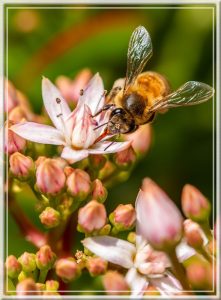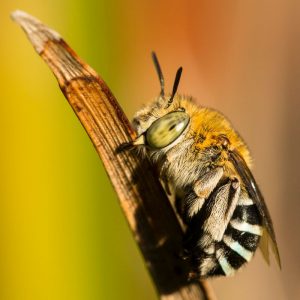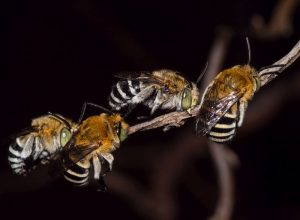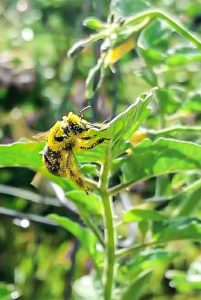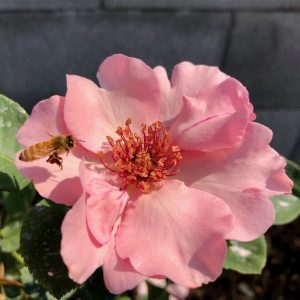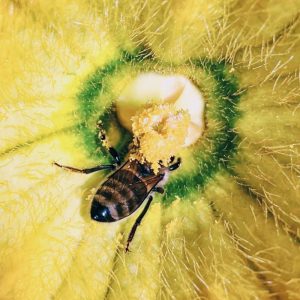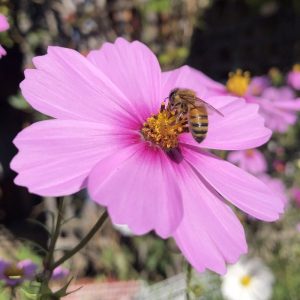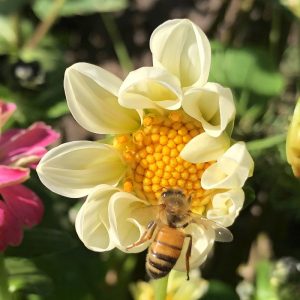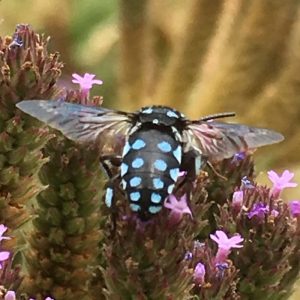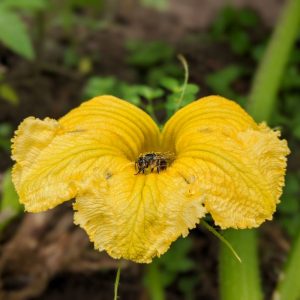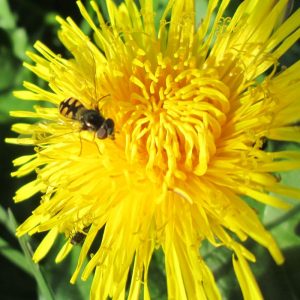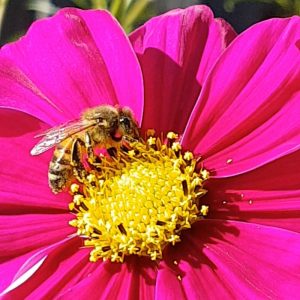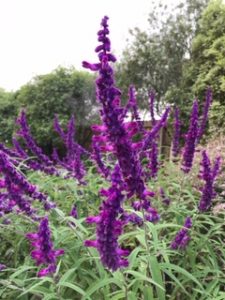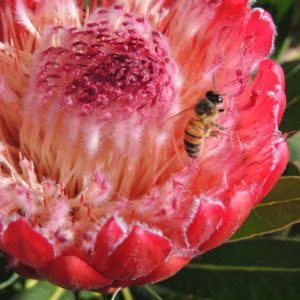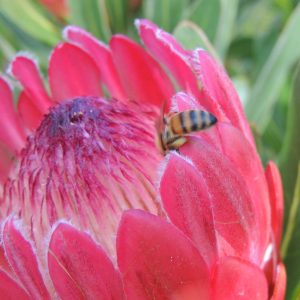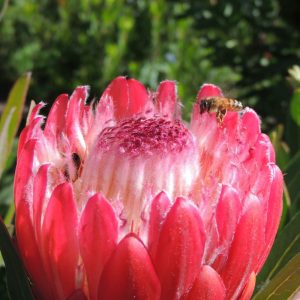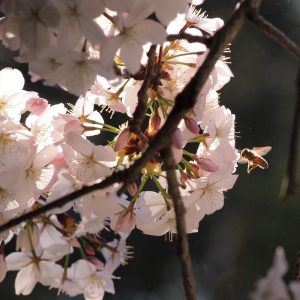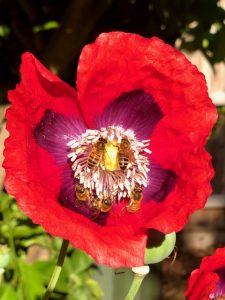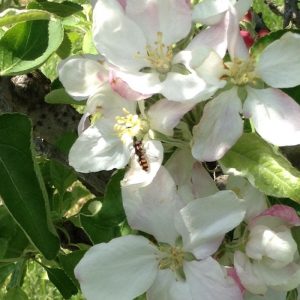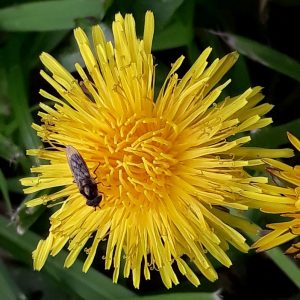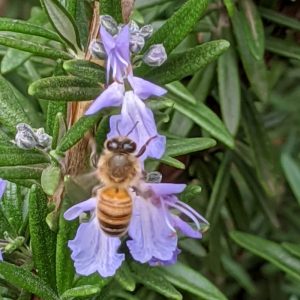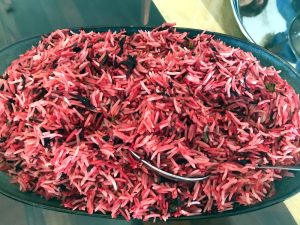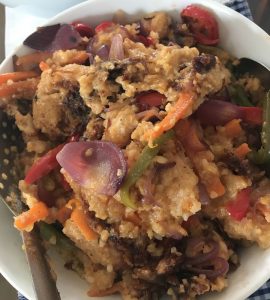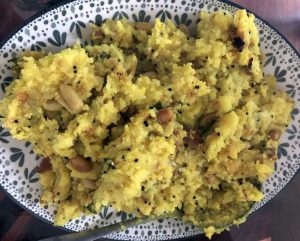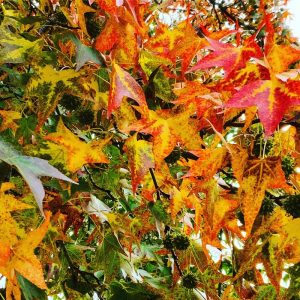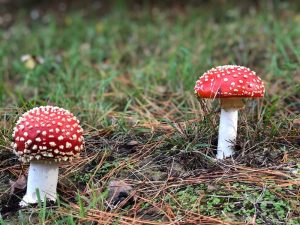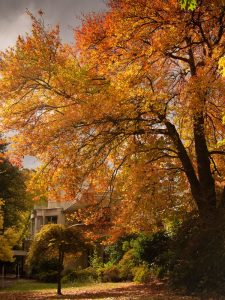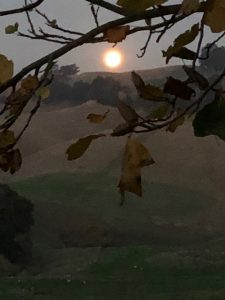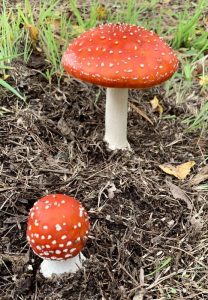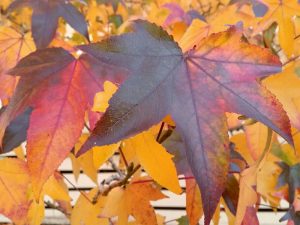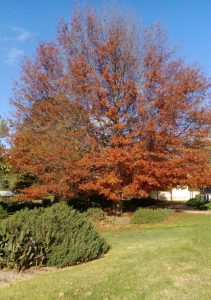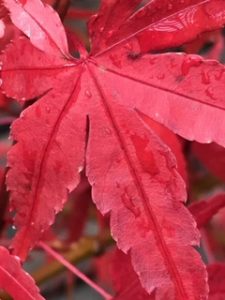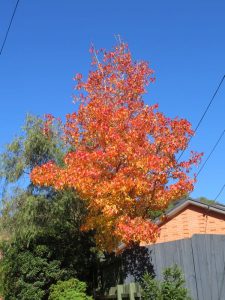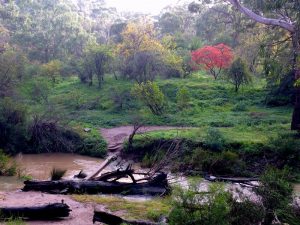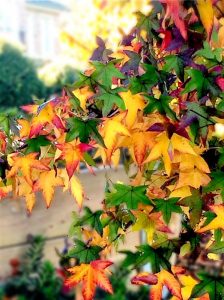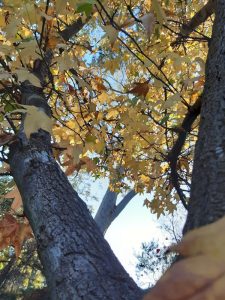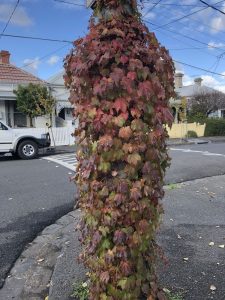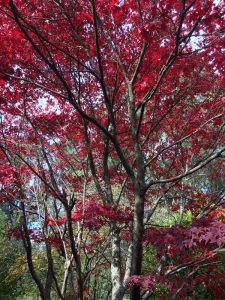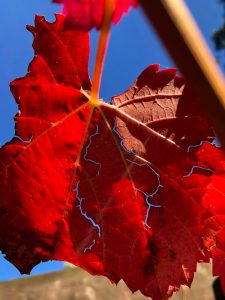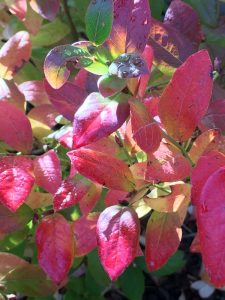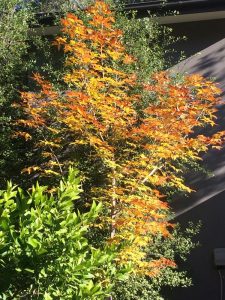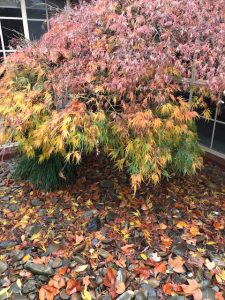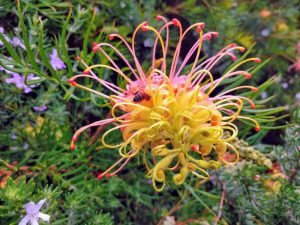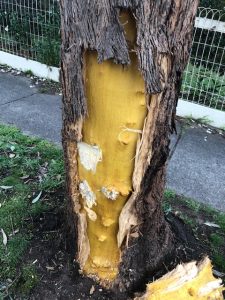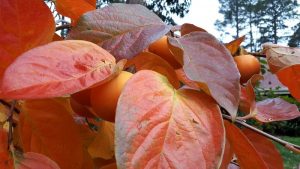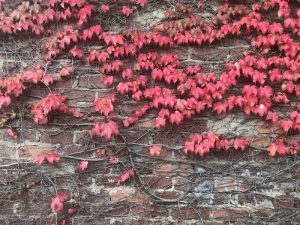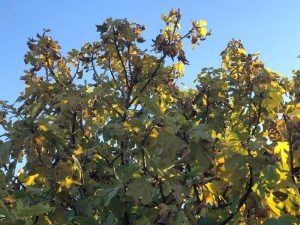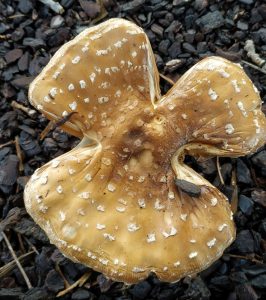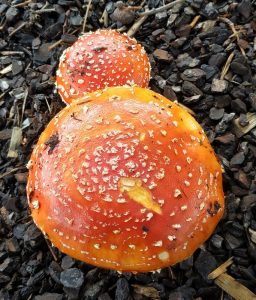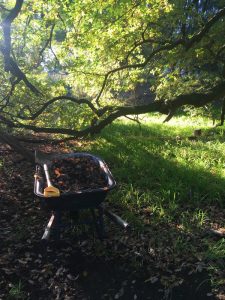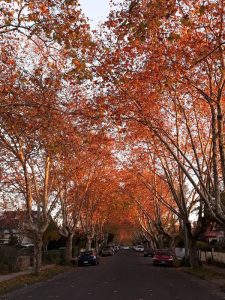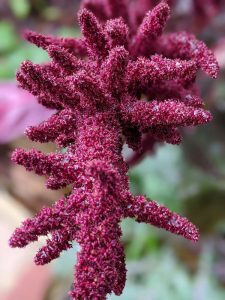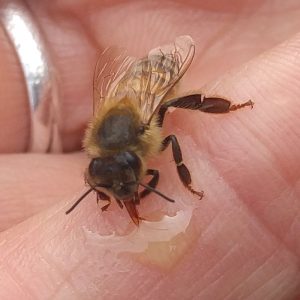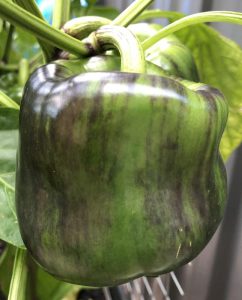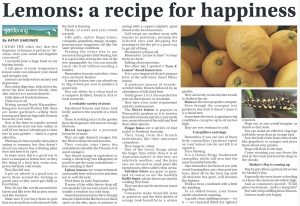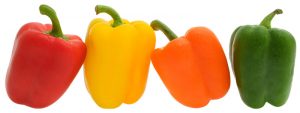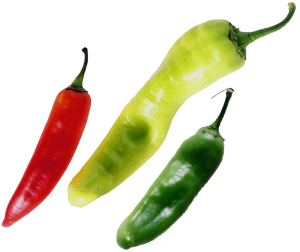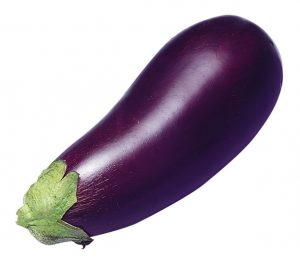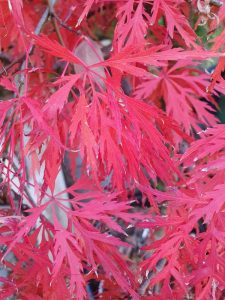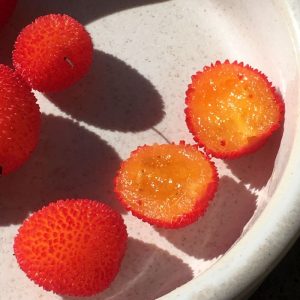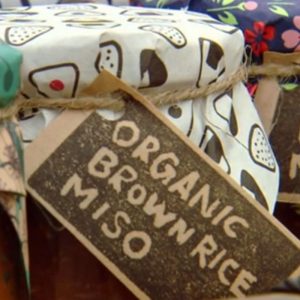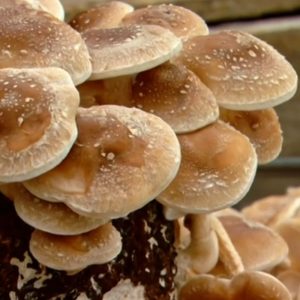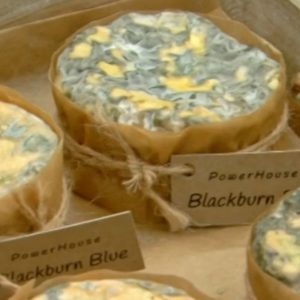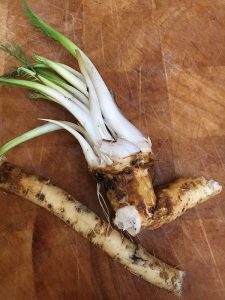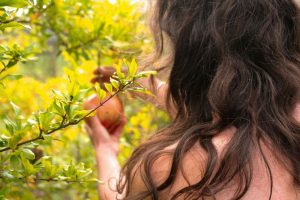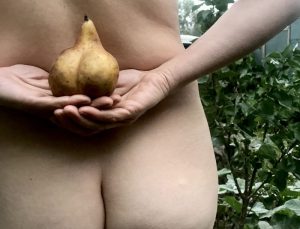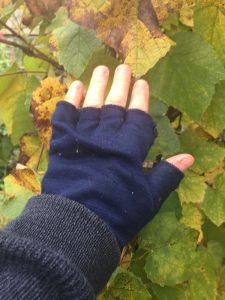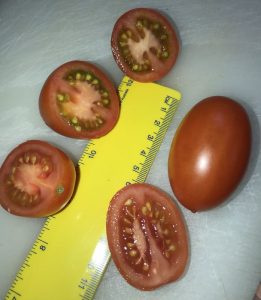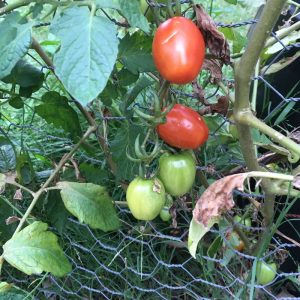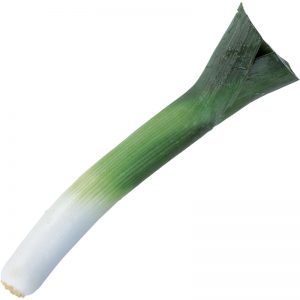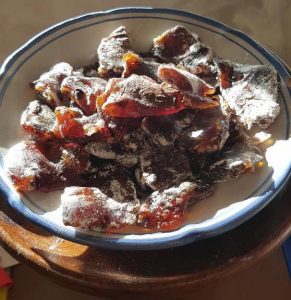Thanks to all the people who have contributed to this week’s newsletter: Alfred Zahra, Alison Raven, Angela Hewitt, Angelo Eliades, Ann Stanley, Aziza De Fazio, Bruno Tigani, Chantelle Ladouceur, Choon Yeok, Claire Smith, Dan Milne, Dorids Glier, Fay Loveland, Gilles Lardy, Jo Buckle, Karen Ye, Karin Motyer, Leah Lux Tame, Lynn-eva Bottomley, Mala Plymin, Marianthi Kougi, Megan Goodman, Moira Tucker, Niloo Barmanray, Pauline Webb, Robin Gale-Baker, Soo Mei Leong, Toni Myers, Vanessa Reynolds and Velyne Moretti.
Which farmer’s markets will be happening this weekend?
Coburg on Saturday; Alphington and Eltham on Sunday.
Ann interviews Dan Milne, from Montmorency
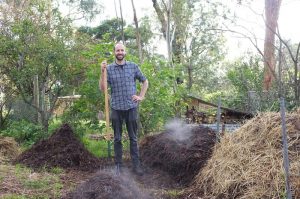 For obvious reasons, our visits to local food-oriented gardens have ceased during the COVID-19 crisis. But, as an experiment, Ann Stanley decided to interview Dan Milne over Zoom. Read Ann’s interview write up.
For obvious reasons, our visits to local food-oriented gardens have ceased during the COVID-19 crisis. But, as an experiment, Ann Stanley decided to interview Dan Milne over Zoom. Read Ann’s interview write up.
Dan is well known in local permaculture circles as one of the leading lights in North East Ranges Permaculture (NERP). As Ann says, “Dan’s house is on 1400m2 of partially shaded sloping land that produces a large number of fruits and vegetables according to permaculture principles.“.
Much of the interview is Dan reflecting on home food growing and the current crisis. As Dan says in the interview, “Growing food in good times can feel like a hobby with mental health benefits but, in times of disruption and crisis, it can provide a source of nutrient-dense food and a sense that you have some control over your basic needs — an opportunity to catch and store energy.”
Read Ann’s full interview write up.
Robin discusses local food groups stepping up to provide food security
[Editor’s note: I asked Robin Gale-Baker to write this article because I think that what it discusses is important and a potential exemplar for other community gardens and groups.]
COVID-19 has placed unprecedented pressure on many families’ access to food in Banyule, as elsewhere. While some have the continued finances to purchase food, and others have increased the size of their veggie gardens to become more independent, many who have lost their jobs or had to move from unsafe situations have become reliant on BANSIC for food.
BANSIC (Banyule Support and Information Centre) has been serving the Banyule community for around 40 years. It is a not-for-profit incorporated association established to provide services for the relief of poverty, suffering, distress, misfortune or helplessness within the southern area of Banyule. Services include emergency relief (which until COVID-19 was in the form of vouchers), help with family and personal problems and information on rights (e.g. legal, health, education, support services and accommodation). BANSIC has two paid staff and much of its work is delivered by volunteers.
Since March, BANSIC has started to provide good quality food to families who are in dire straits. Initially, it focused on packaged food but it willingly accepted Sustainable Macleod’s offer to donate fresh food from the Macleod Organic Community Garden. This initiative was overwhelmingly supported by Sustainable Macleod members.
BANSIC is now supplying 30-40 families weekly (not necessarily the same families each week) with both packaged and fresh food. According to president Sharon Henderson, fresh food has been the most sought-after. Nothing could be fresher than food harvested from the community garden and delivered the same day! Sharon also observed that, once Sustainable Macleod began to donate food, some others followed suit, including Aldi and St Laurent.
Sustainable Macleod has now delivered around 200Kg of fresh food to BANSIC. Fortunately summer crops were still available – tomatoes, eggplants, peppers, chillies, silverbeet and potatoes – plus rhubarb, figs, pomegranates and cumquats. The emergency veggie patch planted on 22nd March (some seed, some seedlings) has provided Asian Greens, lettuces, kale, spring onions and radishes and will soon provide carrots, beetroot, kohlrabi, broccoli and peas.
Not all the food, however, has come from the community garden. Sustainable Macleod members have been generous in providing their homegrown silverbeet, parsley, mint, zucchini, pumpkin, Asian Greens, Jerusalem artichokes, limes, pomegrantes, persimmons and rhubarb. In addition, 75Kg of apples from a Yarra Valley research station have been donated by a member who works there. Some of the more exotic fruits have been welcomed by people from other countries for whom these fruits were more commonplace in their home countries.
So, out of a bad situation created by COVID-19, some good has come. The provision of food for those in need has been a unifying element that has brought our community together, created new partnerships and alliances (which will hopefully continue), and brought out the generous spirit of both businesses and individuals among us.
Anyone who is willing to donate produce is welcome to contact Sustainable Macleod by email.
Our photo competition
Last week’s competition
The theme of last week's competition was bees and other pollinators. It attracted 23 photos and 5 tips. The quality was extraordinary, even higher than that of previous weeks. After consulting with the providers of the prizes (Jane and Peter Dyer from Backyard Honey), 11 photos were shortlisted, any of which would have been a worthy winner. After much discussion, we decided that we could not separate them and took the unprecedented decision of having 11(!) joint winners. Each photographer will receive a jar of Backyard Honey’s raw, unheated honey and each will be invited to their 1 hour Zoom presentation and discussion. Well done Alfred, Alison, Aziza, Gilles, Jo, Karen, Karin and Marianthi! Thanks to everyone else who participated.
In passing, this is what Alison Raven said about her two extraordinary photos of solitary, native blue banded bees (Amegilla cingulata). "The first photo is a single female (4 bands on the abdomen) and the second is of 4 roosting male (5 bands). The females sleep alone in their nests, while the boys all hang out together on twigs at night. If you are lucky and see some just before dusk, you can follow them and find where they are going to roost. Lucky for me, they spent many nights last summer right outside my front door!"
Here are all 23 entries (3 to a row for presentational reasons on mobile phones). If there is ever a week when you click of some of the photos to look at larger versions, this should be that week. I’ve tried to make the experience better than usual in two ways. First, the larger versions are at higher resolution, and sometimes much higher resolution, than normal. Second, whilst the thumbnails are typically cropped versions to make the bees etc more visible, the larger versions show the complete pictures.
We also received a series of tips from Soo Mei Leong for attracting bees and pollinators to your garden:
- Avoid pesticides; instead, aim for organic, chemical free, sustainable garden.
- Grow a variety of flowers in hues of yellow, purple, blue etc, including borage, salvias, lavender, forget me not, echium and nasturtium, as well as native plants, to provide nectar.
- Consider growing bromeliads (besides having standard bird baths ) as some of their crowns hold water and bees drink often and regularly.
- Buy, or make from recycled materials, insect hotels.
- Host a beehive.
Finally, Chantelle brought my attention to the following poem by Brian Bilston (self-declared “Poet Laureate of Twitter“) entitled The last bee:
After the last ee
had uzzed its last uzz,
the irds and the utterflies
did what they could.
ut soon the fields lay are,
few flowers were left,
nature was roken,
and the planet ereft.
The week’s competition
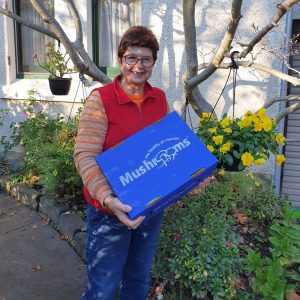
 This week’s competition is going to have the theme of pets. The prize will be a meal for two at a restaurant of your choice (within reason!). Email your entries by end of play Sunday, 31st May. To get things going, here is a picture of my erstwhile cat, Casper, plus wine stain.
This week’s competition is going to have the theme of pets. The prize will be a meal for two at a restaurant of your choice (within reason!). Email your entries by end of play Sunday, 31st May. To get things going, here is a picture of my erstwhile cat, Casper, plus wine stain.
The week from two weeks ago
If you remember, the theme was autumn colours and the winner was Marjory Gardner. Here is a photo of Marjory receiving her prize of a mushroom growing kit. As Marjory said, she is “looking forward to her first homegrown mushrooms on toast“.
Yes, you did know!
Black stripes on capsicums
Gerard O’Donnell wanted to know what the black stripes on his capsicums could be.
Bruno Tigani responded: ?”The black or purple stripes are very likely to be anthocyanin development in the fruit. This is probably due to colder temperatures, such as the very cold nights recently, with the anthocyanins being a protective mechanism in the plant against the temperature. Many vegetables exhibit this discolouration if it gets very cold, such as purpling in broccoli. The capsicum fruits are ripening very slowly now and may not turn red at all, as it is too late in the season here in Melbourne. If the fruit did mature to full colour, then the streaks would fade and you would be left with a red capsicum.”
Pauline Webb also responded: ?”My observations of my own capsicums when they have dark marks or lines is that it is always late in the season when there is a lack of both sun and heat. At this time of year, no capsicum can turn red. It pays to pick them before they have little visitors inside as caterpillar frass is near impossible to wash out.”
As did Moira Tucker: ?”I think it is just a natural mutation and/or a cross of colour types. Keep the seed and see if the colour variation is stable as it has potential as a variation!”
Trailer loads of manure
Shiva Vasi wanted to know where to buy a trailer load of manure.
Angelo Eliades responded: ?”Bulleen Art & Garden nursery sells bulk cow manure. You can either get it delivered, fill a trailer, or borrow the courtesy trailers that they have.”
Claire Smith also responded: ?”Whilst it is bagged, it is possible to get free manure from the RSPCA in Burwood East. If you ring them (9224 2222) and ask for The Barn then they can tell you how to access it.”
As did Moira Tucker: ?”Try a wool grower as they often accumulate manure beneath their shearing shed. It is a pity that the Bendigo Sheep and Wool Show was cancelled this year as there would be have been a lot of shepherds there. There are many small specialist flocks where the fibre is grown for hand spinners. The Handweavers and Spinners Guild of Victoria (based in Carlton North) may have some useful contacts.”
Do you know?
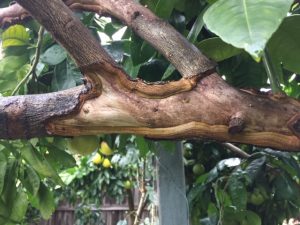 Jan Akeroyd asks: “Does anyone know what is going on with this grapefruit tree (see picture)? It is an older tree which is healthy and productive but which has multiple areas where, like in the photo, the bark is missing on its branches.”
Jan Akeroyd asks: “Does anyone know what is going on with this grapefruit tree (see picture)? It is an older tree which is healthy and productive but which has multiple areas where, like in the photo, the bark is missing on its branches.”
Guy’s veggie growing tip – saved seeds – part 1: the genetics
First, some genetics 101. Most living organisms are diploid, which means that they have two copies of most of their genes. These two copies can be the same or different. During sexual reproduction, one of these copies will be chosen at random from each of the mother and the father. The child will therefore inherit half of its genes from each of its mother and its father but which genes it inherits is a random process and will differ from child to child. If you think about it, this means that you will have lots of genes in common with your siblings but you will also have some genes which are different. This is why you bear some resemblance to your siblings but are not identical to them.
Most people who grow from saved seed want their vegetable plants to be the same variety as the mother plant from which they saved the seeds. This is called growing true to type. It is equivalent to wanting the seeds to be genetic clones of the mother plant. But fertile seeds are the product of male pollen fertilising female seeds and, as such, the genes of a fertile seed are a random half from the genes of each of the male and the female. For this random combination to have the same genetic composition as the mother plant, two things have to be true. First, the male and female parents have to have identical genes (at least for all the genes that make a material difference). Let's call this condition 1. Second, and perhaps less obviously, for every single gene that matters in both the male parent and the female parent, the two copies have to be identical (this is called homozygosity). Let's call this condition 2. Named varieties of vegetables are effectively those for which condition 2 is true.
Plants can be either self-pollinators (flowers usually pollinate themselves) or cross-pollinators (one flower has to be pollinated by another flower). For self-pollinators, condition 2 being true implies that condition 1 is also true and thus named varieties will grow true to type and their seeds can be saved. Examples are beans, peas and tomatoes. For cross-pollinators, however, condition 1 will only guaranteed to be true if there is only one variety of the plant being grown in the geographic area. Broad beans, capsicums, chillies, eggplants and pumpkins are all cross-pollinators and thus their seed saving is somewhat problematic.
Perhaps most dramatically, cabbage is a cross-pollinator and cauliflower and broccoli are just types of cabbage. So, if you save seeds from your cauliflower, they might well grow into something akin to broccoli (or vice versa). And I know that this can happen because it has happened to me in the past!
Heavy stuff! Here's a web page that covers similar ground using different words.
Read more of Guy’s veggie growing tips.
Angelo has been writing some more articles
What materials can you put into your compost bin and what not to compost.
Which variety of grapevine has edible leaves for making dolmades?. [Editor: the answer is sultana aka thompson seedless.]
Live near Eltham and want some cardboard?
One of the effects of COVID-19 has apparently been an increased interest in cycling and increased sales of bikes. As a result, the Bicycle Centre Eltham (at 929 Main Road, Eltham) currently, and possibly only for a short time, has a good supply of waste cardboard packaging. If you can use some for a gardening project you would be welcome to it. Phone the Bicycle Centre beforehand on 8418 0091 to check availability and arrange pick-up. Thanks for the heads up, Lynn-eva Bottomley!
What veggie seeds to plant in June
Here is a list (see the June planting guide for more detail):
Broad beans
Coriander
Garlic
Lettuce
Mustard greens
Onion
Peas
Radish
The list is pretty short. It’s your last chance to plant broad beans and garlic, and arguably too late for them.
Meg’s social isolation week
The paddocks are very green as we drive north of Melbourne to visit the grandparents (with social distancing). Catching up online is not the same. We have missed the end of season at the farm, but grandma has stored boxes of apples, figs and feijoas. These are all waiting at the back door for our arrival, next to the rows of dusty gumboots.
We bring offerings of limes and seeds for planting, including peas and broad beans: Aquadulce, Gippsland Giant and Crimson Flower. We catch up in the farm’s vegetable garden. Grandpa shows us the newly prepared beds that consist mostly of sheep manure from under the shearing shed. He keenly shows us the cape gooseberries that he has never grown before. The berries are yellow in their little paper parcels and taste unusually like a fragrant cherry tomato. We take a handful home to save for seed.
I’ve had a request for possible barley recipes so I thought I would ask grandma for her barley and grain salad. I also asked about her simple winter pasties.
Barley and grain salad
1 cup pearl barley cooked in accordance with packet instructions until just tender
1 cup puy lentils cooked in accordance with packet instructions until just tender
1/3 cup pumpkin seeds
1/3 cup slivered almonds
1/3 cup dried currants
1/3 cup dried cranberries
½ bunch parsley, finely chopped
Mix all above.
Toss the mixture in a light dressing of two-thirds olive oil and one-third lemon juice.
Add salt and pepper to taste.
Note: can be served warm or cold.
Grandma’s pasties
500g good quality beef mince
3 large potatoes grated
4 medium carrots grated
2 brown onions finely diced
salt and white pepper to taste
3-4 sheets puff pastry
milk to glaze
Mix the mince, vegetables, salt and pepper (white pepper is preferred).
Cut each sheet of pastry into four squares, place a good amount of the mix inside each square, fold the pastry like a triangle and place on tray. Glaze the pasties with milk.
Cook in a 200degC oven for around 20 minutes and then reduce temperature to 180degC for a further 20-25 minutes.
Read Meg’s other recipes on our website.
Fay’s recipe for sweet potato dampers
Fay Loveland has written in to suggest that the following recipe might be of interest to those of you with gluten-free diets. It is from The Australian Women’s Weekly Allergy Free Cooking for Kids.
Ingredients
1 & 2/3 cups (225g) gluten-free, self-raising flour (Fay uses the Orgran brand)
1 teaspoon caster sugar (optional)
¼ teaspoon salt
20g butter or margarine
½ cup mashed cooked sweet potato
½ cup milk
Topping:
2 teaspoons milk
2 teaspoons gluten-free self-raising flour
Method
Pre-heat oven to 200degC. Oil the oven tray.
Mix the dry ingredients together.
Melt the butter/margarine in the hot sweet potato or in the microwave (the instructions say to rub the butter in but Fay finds melting is easier). Add the butter and sweet potato to the dry ingredients and mix thoroughly with a knife.
Add the milk quickly until a soft sticky dough. Fay finds mixing with a knife is easiest.
Divide dough into 4 or 5 equal portions. Shape into rounds. Place on a tray. Cut a cross through the top of the dough and brush the tops with milk, then with extra flour.
Bake the dampers for 25–35 minutes, depending on your oven and the size of dampers. Fay finds 5 dampers take around 27 minutes in my oven.
Eat immediately or freeze when cool. They don’t keep very well out of the freezer.
Which link was clicked most times in the last newsletter?
I was surprised that The Warrandyte Diary was the most popular link so I thought I would say a few words about it. First, it is a properly local paper. For example, the latest edition has around 25 pages of local (as opposed to Melbourne-wide) news compared to around 3 pages in the latest Leader. Second, newsletter reader Kathy Gardiner has a regular gardening column. Third, there are often food-related articles (for example, by Carolyn Noel, Laura Russo and Sandi Miller in the latest edition)
Food-related proverb of the month
Two related phrases this month.
As keen as mustard. Meaning: very enthusiastic. The phrase dates back to the mid 17th Century, when it had already taken on its current meaning. Mustard had long been considered to be an essential accompaniment to beef in England because it added zest. Keenness + zest = very enthusiastic.
Cut the mustard. Meaning: to succeed; to come up to expectations. Whilst this phrase is relatively recent, first having appeared in print in 1889, its origins are not definitively known. It is not thought to relate to mustard as a plant, even though mustard plants are apparently difficult to cut, being tough and stringy. Rather, a more likely explanation is thought to be as a development of the phrase as keen as mustard, with ‘mustard’ meaning ‘a high standard’ (as in up to mustard) and ‘cutting’ meaning ‘exhibiting’ (as in cutting a fine figure).
In passing, the word ‘mustard’ derives from combining two Latin words: ‘must’ (meaning young wine) and ‘ardens’ (meaning hot). In other words, mustard = hot, young wine. This is because mustard was originally made by combining seeds of certain brassica plants and grape juice into a paste. It is interesting that the plants are named after the condiment rather than the other way round.
Read more food-related proverbs.
Gardening quote of the month
“When you take a flower in your hand and really look at it, it’s your world for the moment. I want to give that world to someone else. Most people in the city rush around so they have no time to look at a flower. I want them to see it whether they want to or not.” by Georgia O’Keefe.
Joke of the week
Did you hear the joke about the peanut butter? I’m not telling you. You might spread it!
Upcoming online events
If you know of any events other than those listed below, email me.
Newly announced events
Open Table are now offering free no waste cooking workshops on Thursday, 9th June, 5.30-6.15pm and Wednesday, 17th June, 6.30-7.15pm. Read more and register on EventBrite.
Dr Rachel Carey, lead of the Foodprint Melbourne research project, will be giving an online lecture entitled sustaining our food supply on Tuesday, 2nd June, 1.30-2pm. Read more details and book.
Previously announced events
Bullen Art and Garden Nursery (BAAG) are now holding weekly classes online on a variety of subjects. The next classes are on pest control with companion planting (Saturday, 30th May, 10.30-11.30am), growing fruit & veggies in small spaces (Saturday, 30th May, 1.30-2.30pm) and compost & worms (Saturday, 30th May, 3.30-4.30pm). $20 per class. Book online at WeTeachMe.
Darebin Council and 3000acres are holding free, online gardening videos every Tuesday at 3pm on the 3000acres Facebook page.
Open Table are now offering their weekly no waste cook club workshops free and online on Saturdays. As well as cooking (which is actually optional), you will learn about food waste and composting. Register on EventBrite.
Sustainable Macleod are producing a series of videos entitled growing tips starring our very own Robin Gale-Baker.
Whitehorse Council are publishing on their Youtube channel a video each Monday at 9am on various aspects of sustainability, including bee hotels (on 15th June) and beeswax wraps (on 22nd June).
CERES have moved some of their classes online.
Newsletter reader Chloe Thomson is doing free, weekly podcasts on gardening for Bunnings.
Pip Magazine (some of whose journalists live in North East Melbourne) are producing a series of videos entitled simple skills for self sufficiency.
Formidable Vegetable are producing a series of videos entitled ‘grow-vid-19’ permaculture pandemic.
Good Life Permaculture are producing a series of videos entitled crisis gardening.
All The Dirt is a weekly podcast about gardening.
Birdlife Australia are giving weekly talks on their Facebook page. The talks can be watched live starting at midday on Thursdays, or as videos afterwards.

